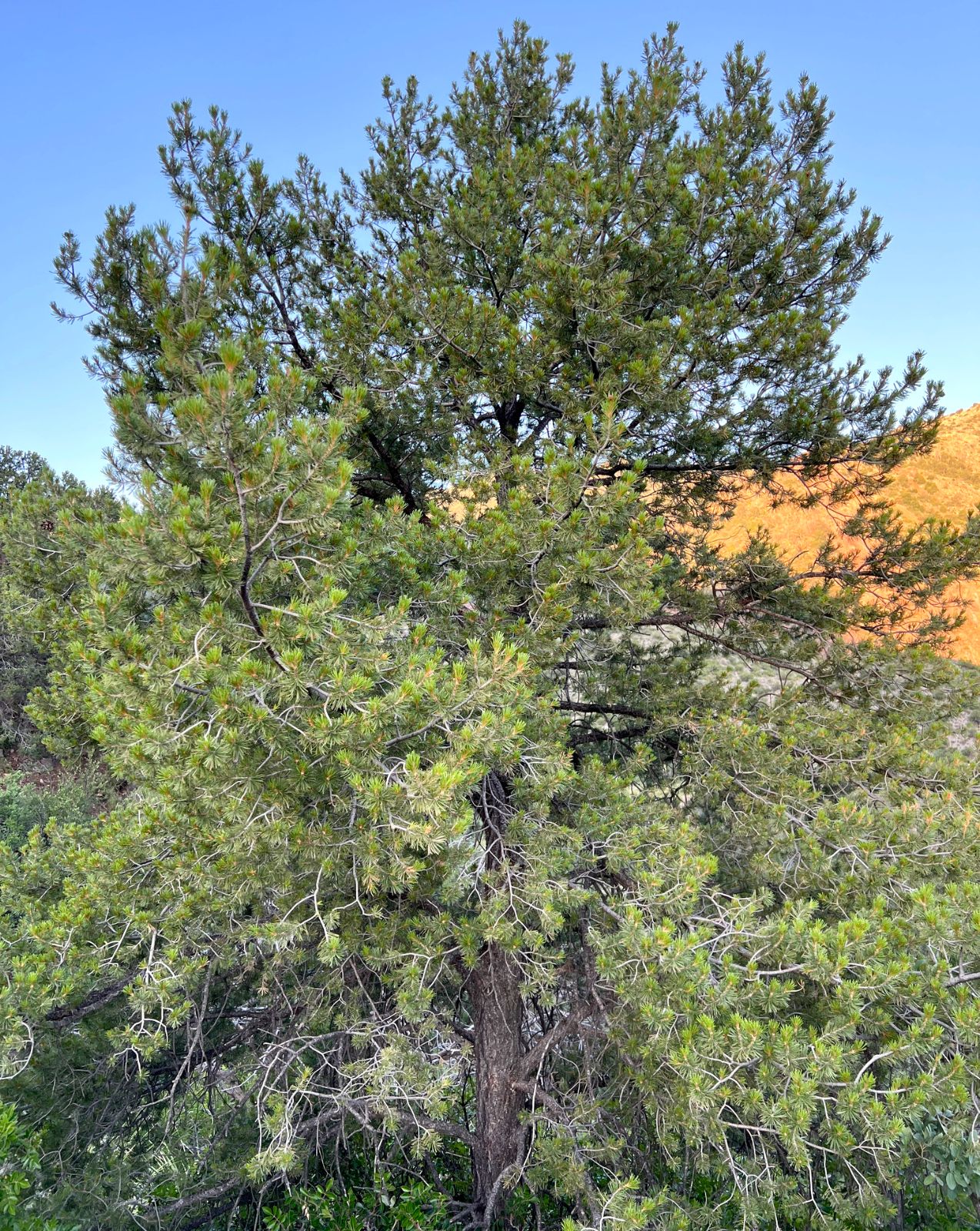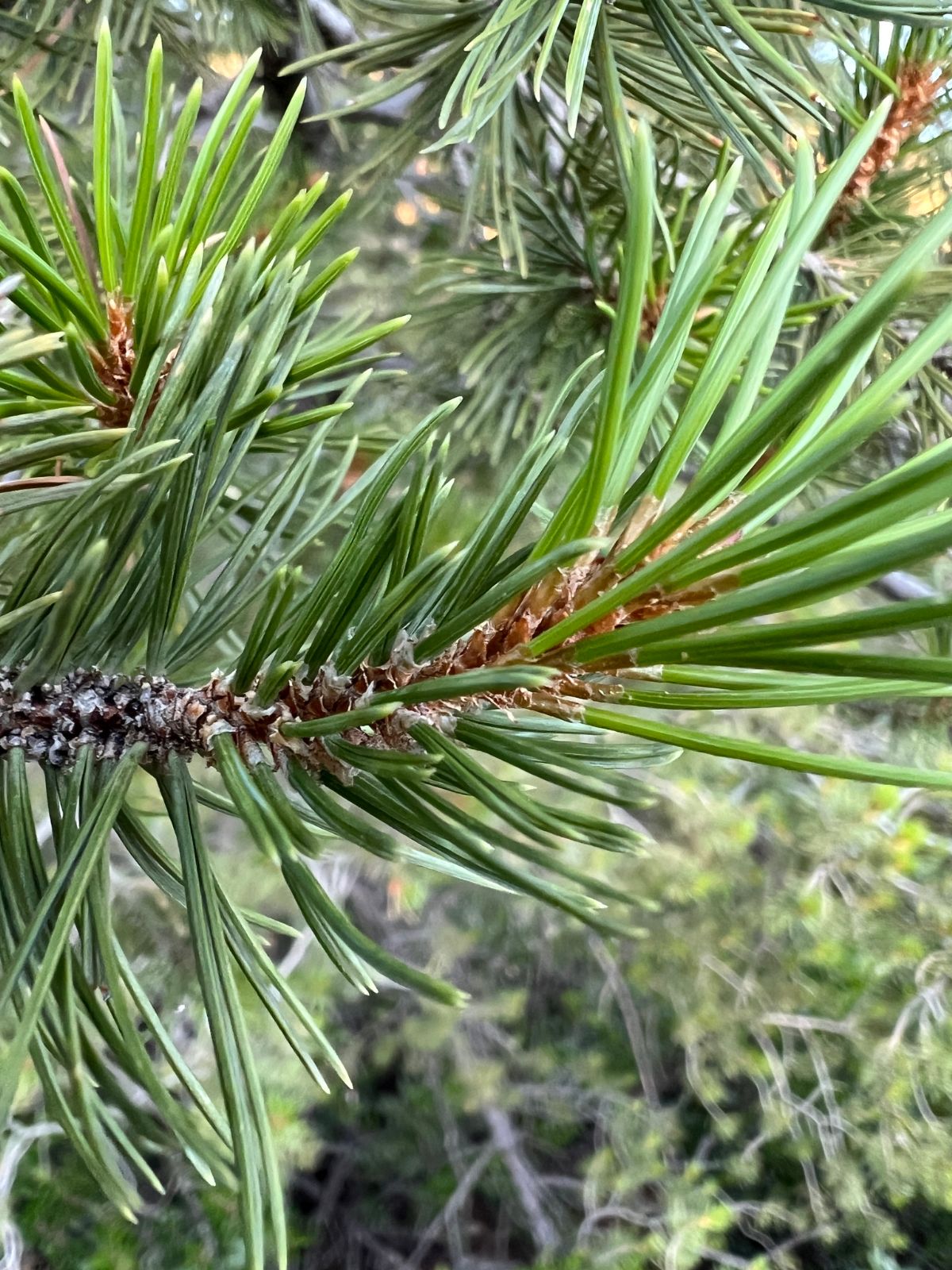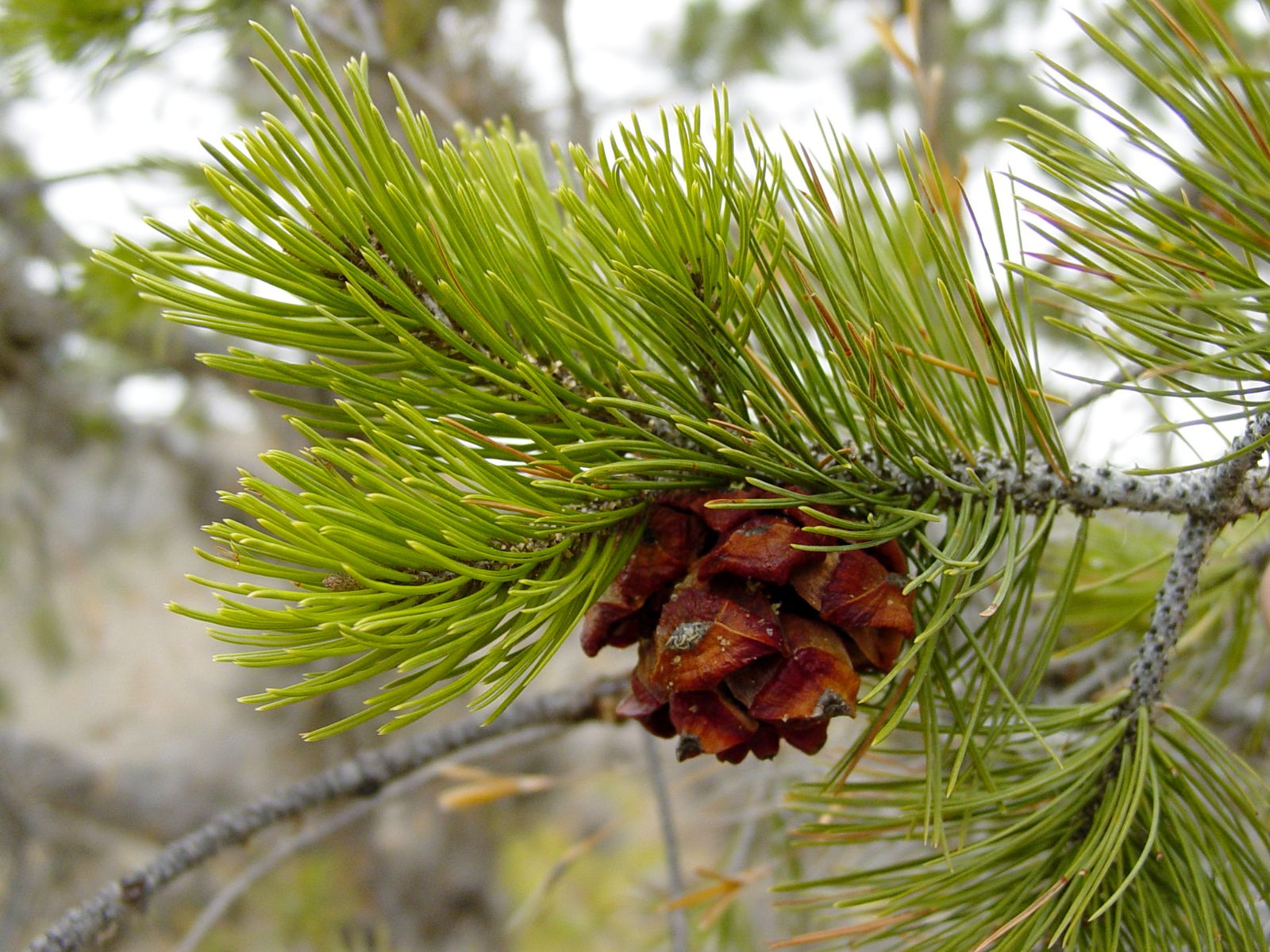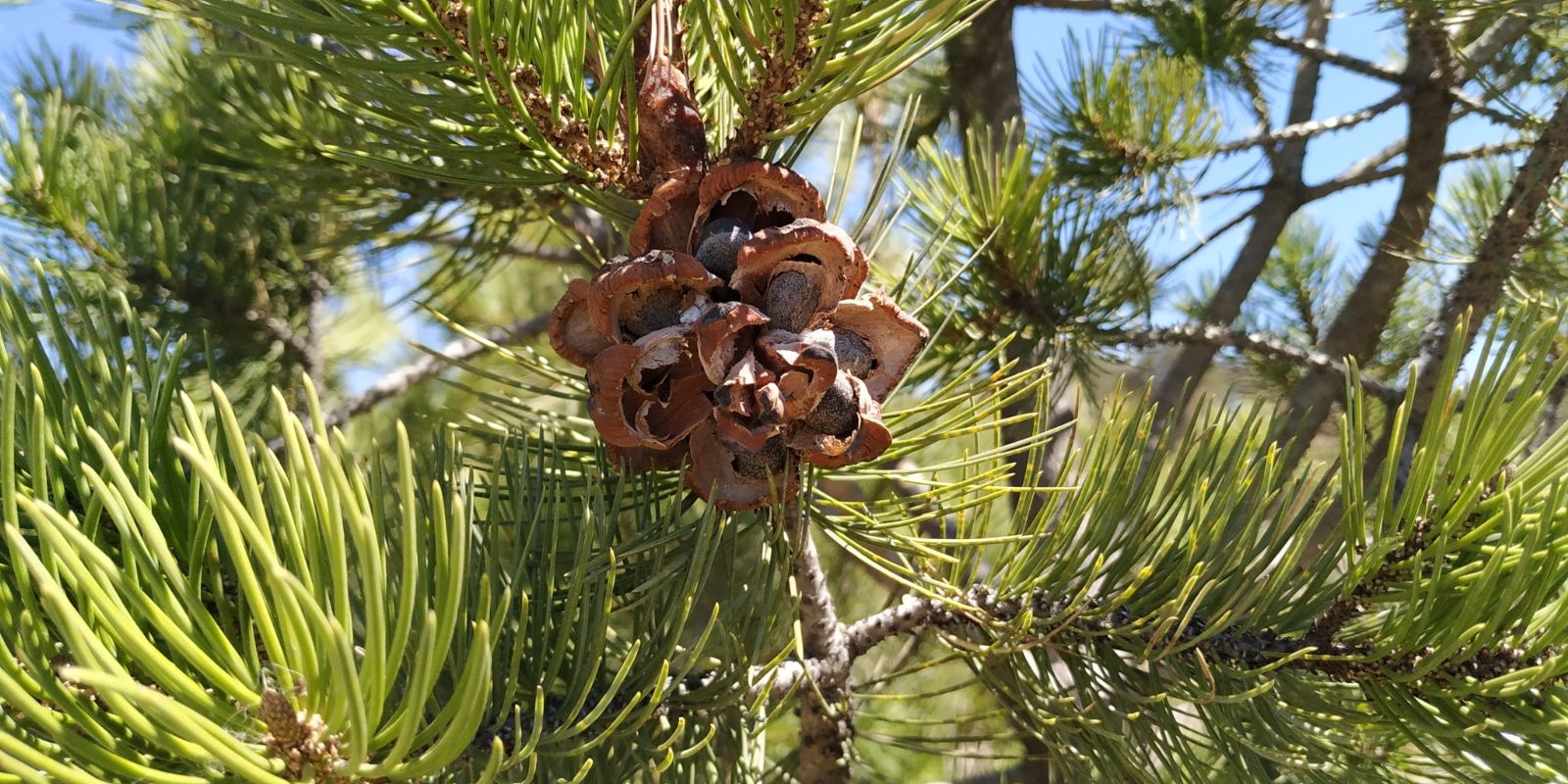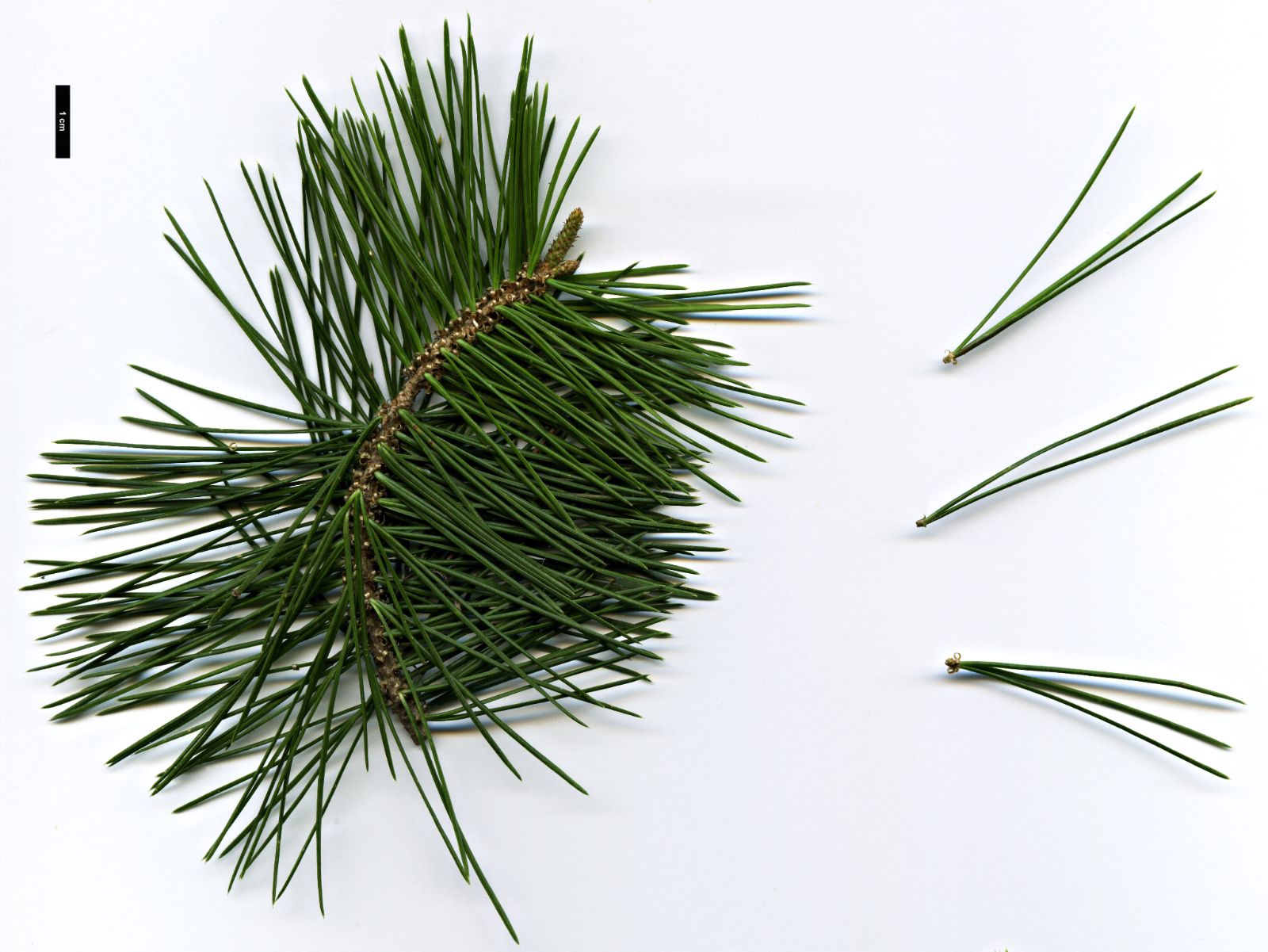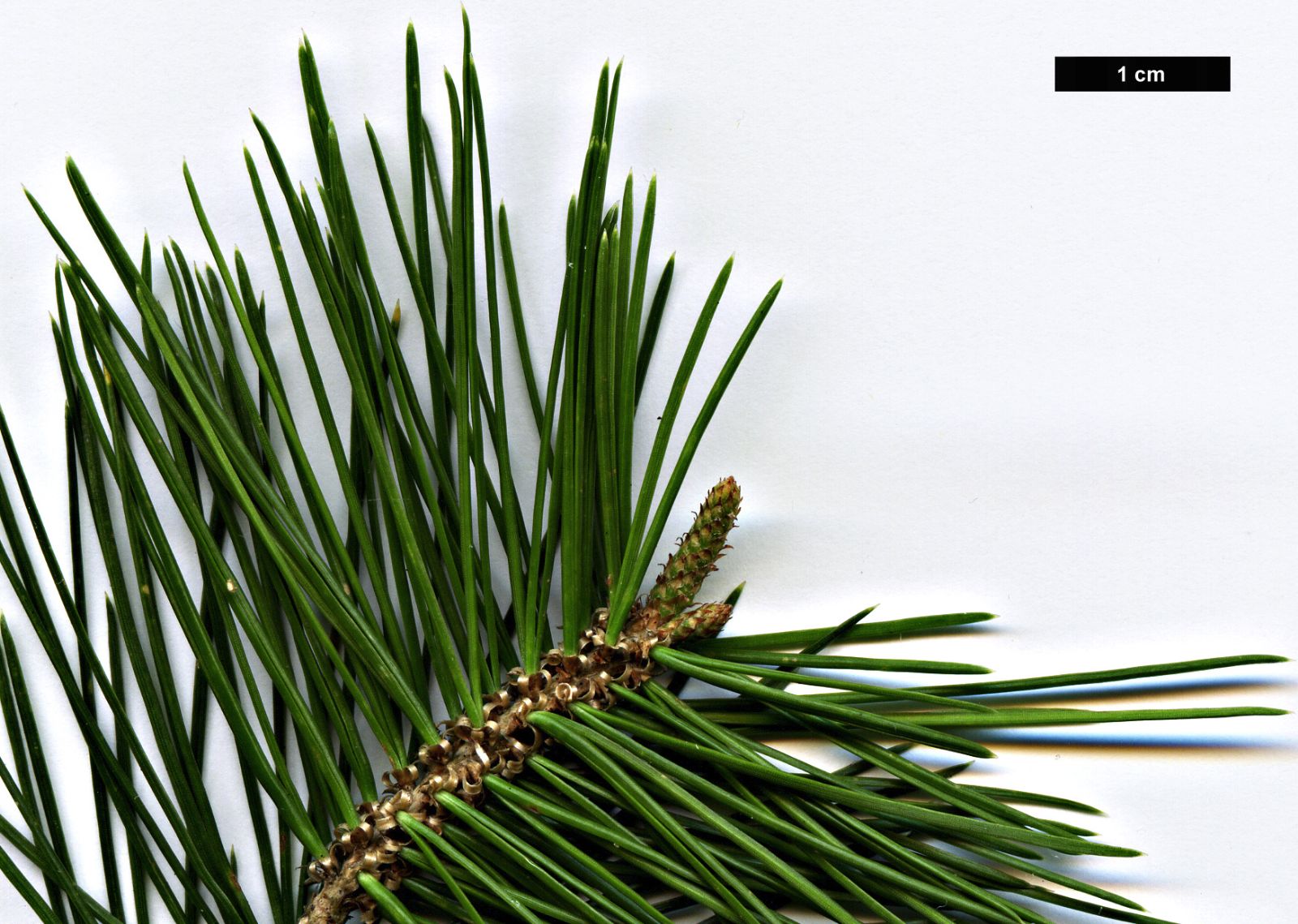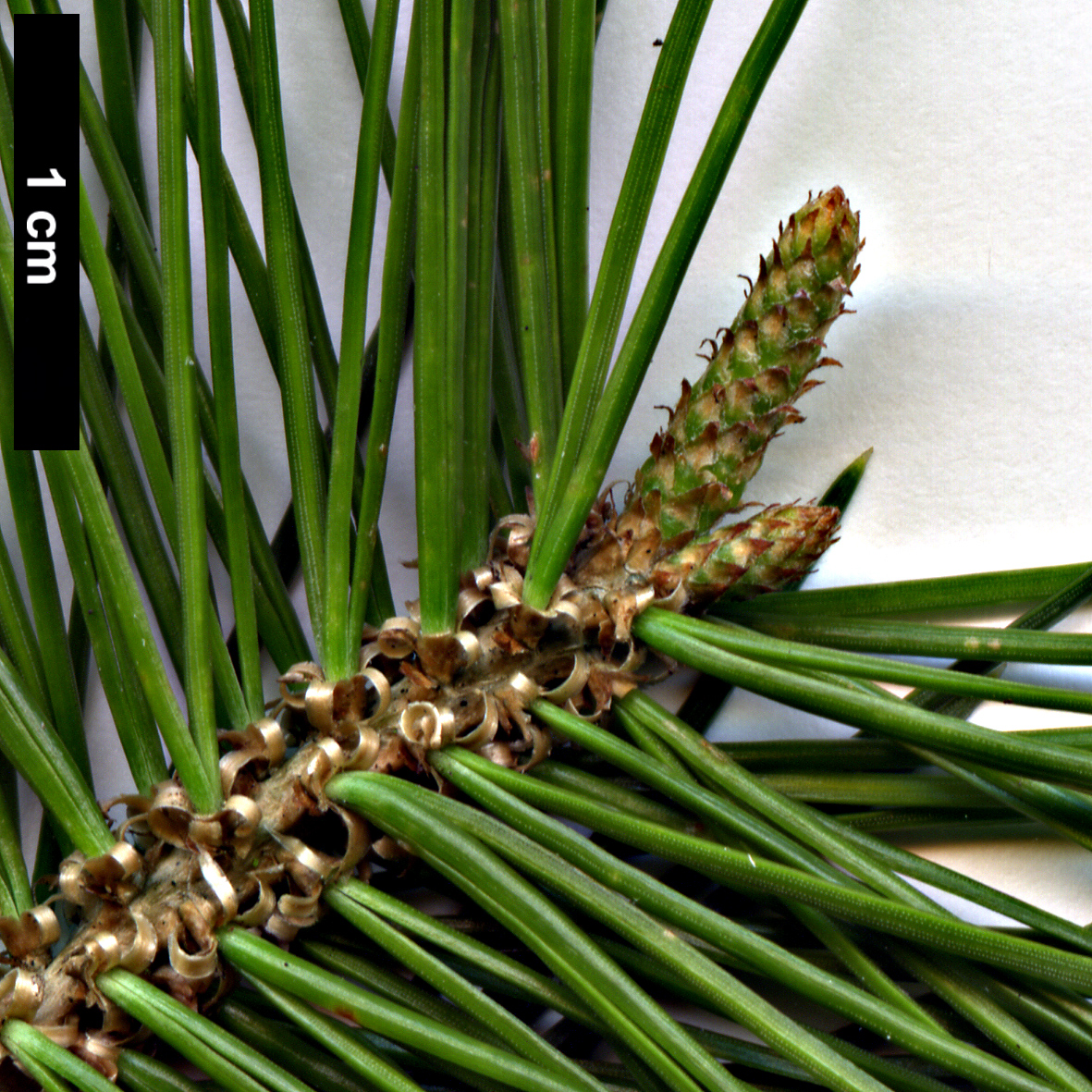Pinus cembroides
Credits
Article from Bean's Trees and Shrubs Hardy in the British Isles
Article from New Trees by John Grimshaw & Ross Bayton
Recommended citation
'Pinus cembroides' from the website Trees and Shrubs Online (treesandshrubsonline.
Infraspecifics
Other taxa in genus
- Pinus albicaulis
- Pinus arizonica
- Pinus armandii
- Pinus attenuata
- Pinus ayacahuite
- Pinus balfouriana
- Pinus banksiana
- Pinus bhutanica
- Pinus brutia
- Pinus bungeana
- Pinus canariensis
- Pinus cembra
- Pinus chiapensis
- Pinus contorta
- Pinus coulteri
- Pinus culminicola
- Pinus densata
- Pinus densiflora
- Pinus devoniana
- Pinus durangensis
- Pinus echinata
- Pinus edulis
- Pinus elliottii
- Pinus engelmannii
- Pinus eremitana
- Pinus flexilis
- Pinus gerardiana
- Pinus greggii
- Pinus × hakkodensis
- Pinus halepensis
- Pinus hartwegii
- Pinus heldreichii
- Pinus henryi
- Pinus × holfordiana
- Pinus hwangshanensis
- Pinus jeffreyi
- Pinus johannis
- Pinus koraiensis
- Pinus lambertiana
- Pinus leiophylla
- Pinus longaeva
- Pinus massoniana
- Pinus maximartinezii
- Pinus monophylla
- Pinus montezumae
- Pinus monticola
- Pinus morrisonicola
- Pinus mugo
- Pinus muricata
- Pinus nelsonii
- Pinus nigra
- Pinus oocarpa
- Pinus orizabensis
- Pinus palustris
- Pinus parviflora
- Pinus patula
- Pinus peuce
- Pinus pinaster
- Pinus pinceana
- Pinus pinea
- Pinus ponderosa
- Pinus pseudostrobus
- Pinus pumila
- Pinus pungens
- Pinus quadrifolia
- Pinus radiata
- Pinus remota
- Pinus resinosa
- Pinus rigida
- Pinus roxburghii
- Pinus sabiniana
- Pinus serotina
- Pinus sibirica
- Pinus strobiformis
- Pinus strobus
- Pinus sylvestris
- Pinus tabuliformis
- Pinus taeda
- Pinus taiwanensis
- Pinus teocote
- Pinus thunbergii
- Pinus torreyana
- Pinus virginiana
- Pinus wallichiana
- Pinus wangii
- Pinus yunnanensis
Editorial Note
We are reorganising articles within Pinus to enable a partial revision of this important genus to commence in late 2023. See the Editorial Note at the beginning of the genus article for further details.
As part of this process, Bean’s texts for several taxa which he discussed under Pinus cembroides have been relocated:
P. cembroides var. monophylla – see P. monophylla
P. cembroides var. edulis – see P. edulis
P. cembroides var. parryana – see P. quadrifolia
Additionally, Bean’s text for P. nelsonii, which he recognised as distinct but discussed under P. cembroides, has been placed within the article based on New Trees (Grimshaw & Bayton 2009), see P. nelsonii.
TC, October 2023.
Trees of Pinus cembroides from several collections in Mexico (for example, J. Hjerting & S. Ødum 17 from Chihuahua in 1989, and a number of gatherings by M.F. Gardner and S.G. Knees in Hidalgo in 1993) are grown in the Scottish botanical gardens and are happy in well-drained sites there. At the Hillier Gardens a specimen from Gardner & Knees 5185 was 1.6 m tall in 2007, suggesting that it is slow-growing in cultivation. As a drought-tolerant tree it would seem to be well suited to the drier parts of England, and more widely in southern Europe. A gold-leaved selection found by John Fairey has been named ‘Peña Nevada Gold’ and is in cultivation at the University of California Botanical Garden at Berkeley.
Bean’s Trees and Shrubs
Pinus cembroides
A bushy tree usually 15 to 20 ft high, sometimes 40 or 50 ft, the young branches slender, glaucous. Leaves mostly in threes, sometimes in pairs, persisting for about three years, 1 to 2 in. long, dark green; in each cluster the inner faces of the leaves are pressed together, especially when young; margins not toothed; leaf-sheath at first 1⁄4 to 3⁄8 in. long, the scales afterwards becoming reflexed and forming a rosette round the base of each cluster. Cones roundish, egg-shaped, 11⁄2 to 2 in. long, 1 to 11⁄2 in. wide, with very few scales. Seeds 1⁄2 in. long, edible.
Native of Mexico (including northern Baja California) and of bordering parts of Arizona, New Mexico, and Texas; introduced by Hartweg in 1839, but very rare in collections. The seeds are sold in Mexican markets as ‘piñones’.
From New Trees
Pinus cembroides complex
(Subgen. Strobus, Sect. Parrya)
The delimitation of the taxa allied to Pinus cembroides is disputed, some (Farjon & Styles 1997, Farjon 2001, 2005a) regarding them as variants of a wide-ranging, morphologically variable species, while others (Perry 1991, Malusa 1992, Price et al. 1998, Richardson 1998, Gernandt et al. 2003) prefer to view them as separate species. The latter approach seems to be that most favoured by fieldworkers in Mexico, and we have adopted it here, especially as the taxa also have horticultural distinctions. A key to the species considered by Farjon (2001) to be intraspecific is given below, adapted from Farjon & Styles (1997) with the assistance of Michael Frankis. Specific accounts follow the normal alphabetical order.
In this wide sense, Pinus cembroides is one of the most important producers of pinyon (pine nuts) in Mexico (Rodriguez-Franco 2002), and it also has considerable potential in horticulture. In most forms it is usually a rather low, multistemmed broad bush, but can develop into a taller tree, usually with stiffly spreading branches. The literature is vague as to the precise identity of cultivated material in the United States, where P. cembroides (s.l.) is recommended for its tolerance of drought and alkaline soils (Gilman & Watson 1994a) and is occasionally used in landscapes (Dirr 1998), but all the taxa in this group could clearly be more widely planted, in the United States and in Europe.
| 1a. | Leaves wholly or largely epistomatic, with lower surface dark green, upper stomata bands white | 2 |
| 1b. | Leaves amphistomatic, light green on all surfaces | 3 |
| 2a. | Leaves in fascicles of three (rarely four); cones under 4.5 cm long; Mexico (Chihuahua, Coahuila, Durango, Nuevo León, San Luis Potosí, northeast Sonora, west Tamaulipas, Zacatecas), USA (southeast Arizona, southwest New Mexico) | P. johannis |
| 2b. | Leaves in fascicles of three to four (rarely two or five); cones over 4.5 cm long; Mexico (Puebla, Tlaxcala, west Veracruz) | P. orizabensis |
| 3a. | Leaves usually long, (2.5–)4–7(–8) cm, < 1 mm wide, mainly straight; Mexico (Baja California Sur) | P. cembroides subsp. lagunae |
| 3b. | Leaves usually short, (2–)3–5(–6.5) cm, (0.6–)0.7–1.2 mm wide, mainly curved; in fascicles of two to three; Mexico (Aguascalientes, Chihuahua, Coahuila, Durango, Guanajuato, Hidalgo, Jalisco, México, Nuevo León, Puebla, Querétaro, San Luis Potosí, Sonora, Tamaulipas, Tlaxcala, Veracruz, Zacatecas), USA (southwest Texas) | P. cembroides subsp. cembroides |
subsp. cembroides
Shrub or tree to 25 m, trunk straight or contorted, 0.2–1.2 m dbh. Bark thin, smooth, blackish grey to greyish brown; in older trees, becoming thick and irregularly fissured with orangish new bark at the centre of the fissures. Crown broad, rounded and open. Branchlets slightly glaucous or orange-brown, becoming grey; vegetative buds not or slightly resinous. Leaves in fascicles of two to three, persisting for three to four years, dull green to yellow-green, amphistomatic, curved or nearly straight, rigid or slightly lax, triangular or semicircular in cross-section, (2–)3–6(–8) × 0.06–0.12 cm, apex acute. Fascicle sheaths 0.4–0.6 cm long, pale brown, bracts forming a rosette at the base of the fascicle. Cataphylls subulate or triangular, 0.2–0.4 cm long, light brown. Male strobili small, 0.5 × 0.3 cm, pollinating in spring. Female cones subterminal, paired or in whorls of three, mature cones sessile or short-pedunculate. Cones (2–)3–4.5 × 3–6 cm, globose or ovoid, green, maturing yellowish buff to orange-red, maturing in about 18 months, often resinous. Scales 25–40, irregular in shape, spreading easily; apophysis raised, rhombic to pentagonal; umbo dorsal, 6–9 mm wide, raised, with a minute prickle. Fertile seeds greyish black, infertile seeds light brown; wings rudimentary, remaining attached to the seed scale. Perry 1991, Farjon & Styles 1997. Distribution MEXICO: Aguascalientes, Chihuahua, Coahuila, Durango, Guanajuato, Hidalgo, Jalisco, México, Nuevo León, Puebla, Querétaro, San Luis Potosí, Sonora, Tamaulipas, Tlaxcala, Veracruz, Zacatecas; USA: southwest Texas. Habitat Transitional areas between desert plateaus and valleys, and mesic coniferous forest (800–2800 m asl). USDA Hardiness Zone 8. Conservation status Lower Risk. Illustration Farjon & Styles 1997, Farjon 2005a; NT580. Cross-references B219, K213.
Trees of subsp. cembroides from several collections in Mexico (for example, J. Hjerting & S. Ødum 17 from Chihuahua in 1989, and a number of gatherings by M.F. Gardner and S.G. Knees in Hidalgo in 1993) are grown in the Scottish botanical gardens and are happy in well-drained sites there. At the Hillier Gardens a specimen from Gardner & Knees 5185 was 1.6 m tall in 2007, suggesting that it is slow-growing in cultivation. As a drought-tolerant tree it would seem to be well suited to the drier parts of England or southern Europe. A gold-leaved selection found by John Fairey has been named ‘Peña Nevada Gold’ and is in cultivation at the University of California Botanical Garden at Berkeley.
Pinus cembroides subsp. lagunae (Rob.-Pass.) D.K. Bailey is endemic to Baja California Sur, where it is the only pine, and so cannot be confused with any other species in the wild. Its leaves are straight, rather long, (2.5–)4–7(–8) cm, less than 1 mm wide, with two intermittent lines of stomata on each face (Perry 1991, Farjon & Styles 1997). It is not known to be in cultivation.

